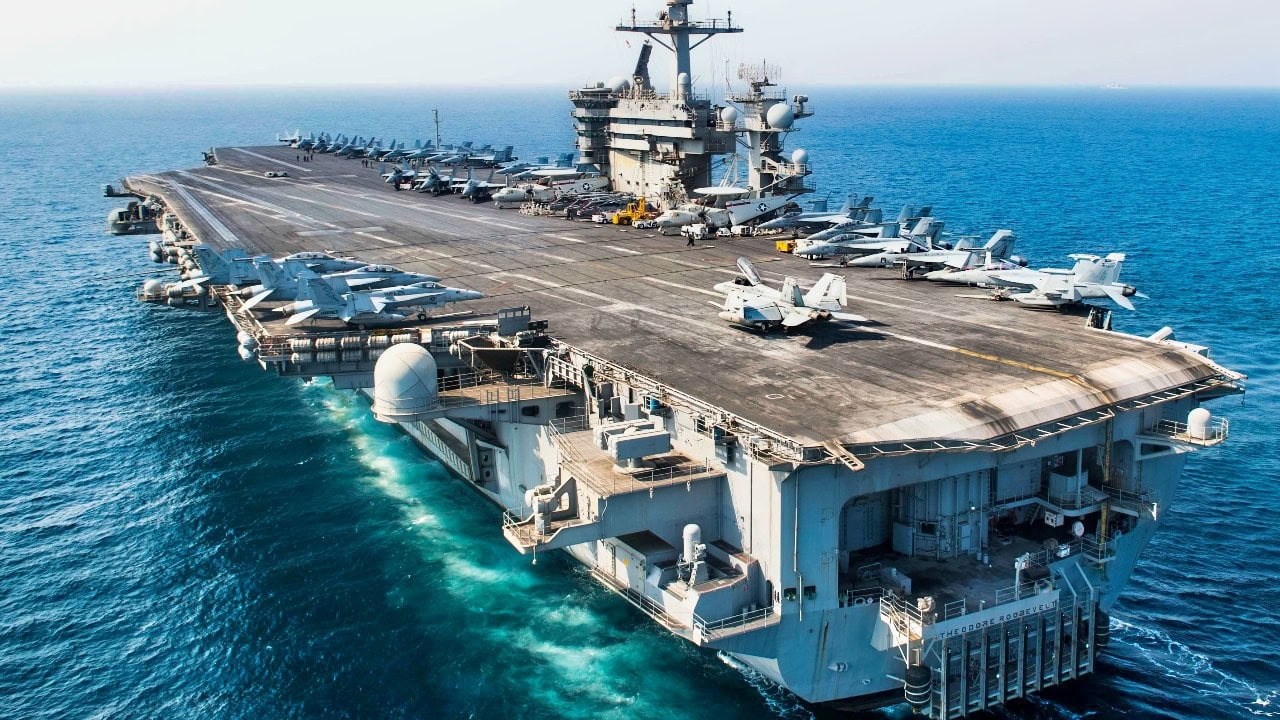Key Point and Summary: France’s Rubis-class nuclear-powered attack submarines (SSNs), despite being the smallest in operational service, pack powerful capabilities in stealth, anti-submarine warfare, and power projection. That means any modern aircraft carrier could be under threat.
Key Point #1 – Notably, during a 2015 naval exercise, the Rubis-class submarine Saphir demonstrated remarkable stealth and tactical prowess by penetrating the USS Theodore Roosevelt’s defensive screen and notionally “sinking” the Nimitz-class aircraft carrier.
Key Point #2 – Armed with Exocet SM39 anti-ship missiles and heavy torpedoes, Rubis-class submarines have proven highly effective. Although gradually being retired in favor of newer platforms, their legacy continues to influence modern anti-submarine tactics and serves as a cautionary example for carrier strike groups worldwide.
How France’s Tiny Rubis-Class Submarine “Sank” a US Aircraft Carrier
The French Navy’s Rubis-class submarines are nuclear-powered attack submarines (SSNs) primarily designed for anti-submarine warfare, intelligence gathering, and power projection missions.
But this submarine can do far more than anyone thought. During a naval exercise in 2015, a stealthy Rubis-class sub, Saphir (S602), maneuvered into the defensive area of the Nimitz-class aircraft carrier USS Theodore Roosevelt and “sank” her. This showcased the Rubis-class’s capabilities against advanced anti-submarine defenses.
Meet The Rubis-class Submarines
The French Navy tried to develop nuclear-powered submarines in the 1960s, but their first attempt was scrapped in the early construction phase.
In the early 1970s, they developed a new Plan Blue, which required producing 20 conventionally and nuclear-powered submarines.
The resulting SNA972 Rubis class became the smallest nuclear-powered type in operational service with any navy, and built at a relatively low cost compared to other nuclear attack submarines. France made this possible by installing a tiny 48-megawatt integrated reactor-heat exchanger system.
The earliest submarines were very noisy, a potential death sentence to an attack submarine during war. However, the French rectified this issue by reshaping and lengthening the hull to reduce noise emissions.
The Rubis-class submarines, developed in the 1980s, were the prime component of France’s nuclear-powered attack submarine force for strategic and tactical operations.
The compact and stealthy submarines combine nuclear propulsion with advanced sonar and weapons systems, offering a versatile platform.
Six vessels were built under this class, including Rubis (S601), Saphir (S602), Casabianca (S603), Émeraude (S604), Améthyste (S605), and Perle (S606).
Small But Heavily Armed: An Aircraft Carrier Feels the Pain
Rubis-class submarines are 241 feet long and 25 feet wide and displace just 2,600 tons underwater.
They are propelled by the K48 pressurized water nuclear reactor, which has one shaft and one propeller. The submarine’s top speed is 25 knots.
Armaments include four 21-inch torpedo tubes that launch F17 Mod.2 heavy torpedoes. The boat carries Exocet SM39 sea-skimming missiles.
Naval Technology wrote this about the Exocet missile, “The torpedo tube-launched Exocet SM39 anti-ship missile is manufactured by MBDA (formerly EADS Aerospatiale). Target range and bearing data is downloaded from the submarine’s tactical data system and weapon control system into the Exocet’s computer. The missile approaches the target area in sea-skimming mode using inertial navigation and then active radar homing, at speeds over Mach 0.9 with a range of 50km. The Exocet’s 165kg high-explosive shaped charge warhead is armed with a delayed impact and a proximity fuse.”The “Sinking of the USS Theodore Roosevelt” in 2015
The joint exercise that made the Rubis-class submarines famous took place in 2015. During this particular exercise, the Rubis submarine Saphir patrolled with the Nimitz-class carrier USS Theodore Roosevelt.
Saphir was initially assigned to the friendly force team, supporting aerial operations from the carrier. On day two, as the exercise continued, it switched to the enemy force, tasked with locating and attacking the carrier.
Due to her stealth and the expertise of her crew, the Saphir penetrated the defensive screen around the USS Theodore Roosevelt, “sunk” the Nimitz-class carrier, and escaped, all while evading detection by the carrier group’s anti-submarine warfare (ASW) assets.
It was quite an accomplishment for the smaller Saphir to infiltrate the carrier group’s defensive screen and sink the big ship.
Adding to the US Navy’s red face in this exercise is the fact that Saphir, an older submarine with aging technology and inferior to more modern submarines, was still able to accomplish this mission.
This exercise, like the one earlier in the decade with the Swedish Gotland-class submarine, was of interest to the Chinese Navy.
With a potential war brewing in the Indo-Pacific region, the Chinese #1 target on the sea will be the US aircraft carriers. The Chinese have developed the Yuan-class submarines powered by AIP, and will study this on how the submarines were able to infiltrate the defensive screen of the carriers undetected.
The French Navy has begun retiring the Rubis-class submarines; only three remain active. The Saphir was retired in 2019, followed by the Rubis in 2022 and the Casabianca in 2023.
About the Author:
Steve Balestrieri is a 19FortyFive National Security Columnist. He served as a US Army Special Forces NCO and Warrant Officer. In addition to writing for 19FortyFive, he covers the NFL for PatsFans.com and is a member of the Pro Football Writers of America (PFWA). His work was regularly featured in other military publications.

